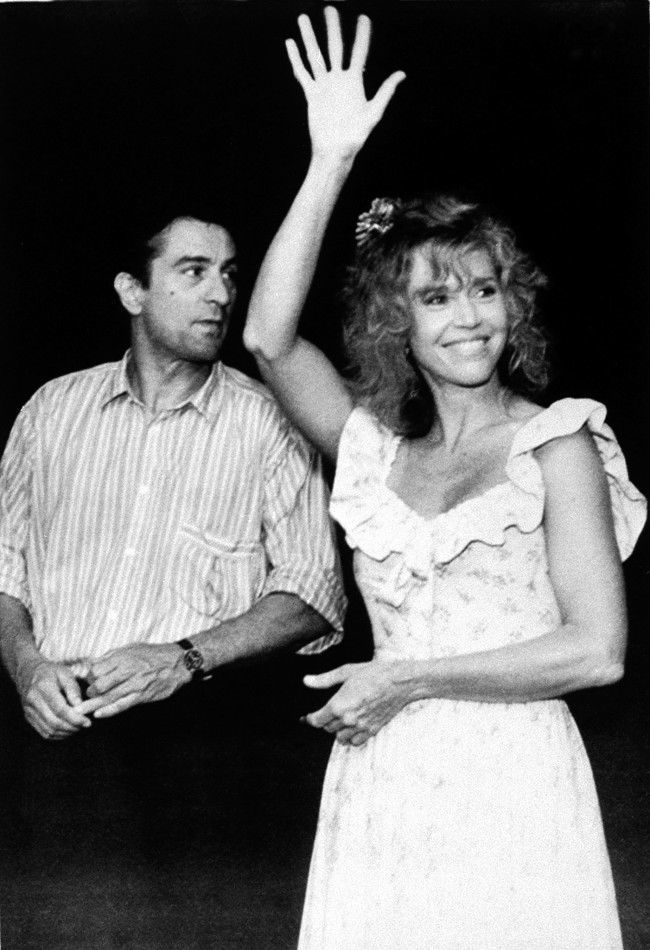
U.S. Air Force planes spray the defoliant chemical Agent Orange over dense vegetation in South Vietnam in this 1966 photo.
DID Agent Orange hurt Americans who looked after C-123 transport planes that spread the defoliant long after the Vietnam War ended? Yes.
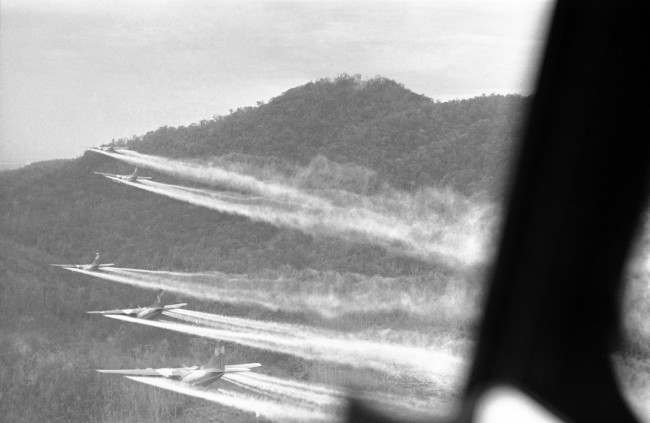
Flying a bare 100 feet above the jungle hills west of Hue, 5 bulky C-123 providers cut loose with a spray of chemical defoliant on August 14, 1968. The planes are flown by U.S. air force crews who have nicknamed themselves the r’anch hands’. The chemicals used burn off heavy foliage hiding enemy infiltrations routes and base camps. So far in Vietnam more than 4 million acres have been sprayed with the defoliant and plans call for new target areas to match the increased infiltration of North Vietnamese in to the south. The aircraft are specially equipped with huge 1,000 gallon tanks holding 11,000 lbs. of herbicide. To hit their target areas they fly barely above the tree tops and in tight formation. In particularly dangerous areas they are provided with fighter-bomber escorts.
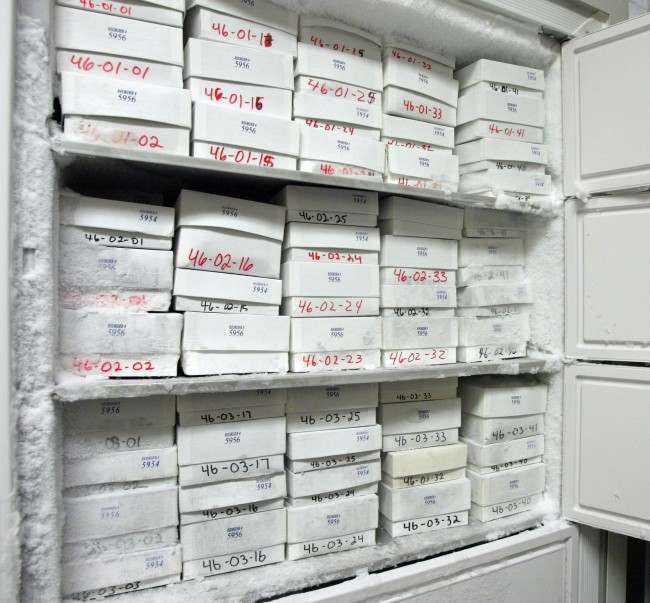
Frozen blood, serum and urine samples are shown stored in freezers at Brooks City Base in San Antonio, Texas, Wednesday, June 6, 2007. Thousands of small white boxes containing samples of blood, serum and urine are all that remain of a 25-year, $143 million program to find out if the herbicide Agent Orange made Vietnam War veterans sick.
The Washington Post:
And many of the troops who served in the conflict have been compensated for diseases associated with their exposure to the toxic defoliant.
But after the war, some of the planes were used on cargo missions in the United States. Now a bitter fight has sprung up over whether those in the military who worked, ate and slept in the planes after the war should also be compensated.
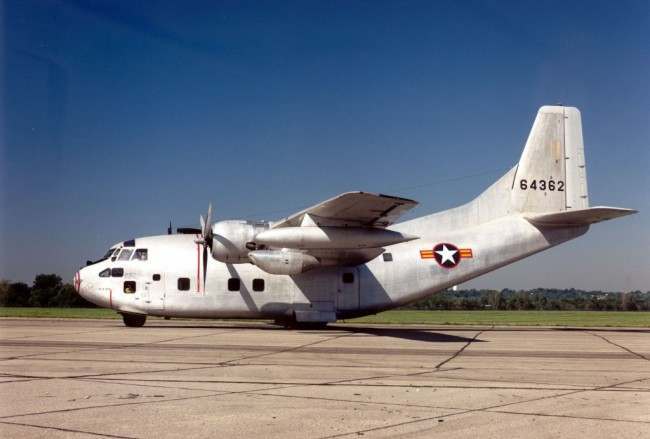
A new study published in the journal Environmental Research reveals that Air Force reservists were exposed to higher levels of the toxic chemical than previously known (or
admitted). Many of the same aircraft that dispersed Agent Orange during the war were later used as transport vehicles during (relative) peacetime, primarily between the years 1971 and 1982. And tests taken many years after those transports show the planes still contained dangerous levels of the chemical. Initial testing of the planes after the war and before peacetime service was nonexistent.
The US Air Force and Department of Veterans Affairs have previously denied benefits to those exposed to the chemical from these planes, claiming it wasn’t a harmful level of exposure. Researchers have now proven this to be false. The study used the US Army’s own algorithms and samples taken from the aircraft to estimate how much the post-war level of exposure would have affected the body, with the results demonstrating that the levels in those aircraft were unacceptable under USAF and VA policies.
Actress Jane Fonda, waving to fans, and actor Robert De Niro arrive for the Brandie Schieb Children’s Fund in Woodbury, Conn., Friday, July 29, 1988. The benefit is for children with birth defects due to Agent Orange, a toxic herbicide used by the U.S. military during the Vietnam War.
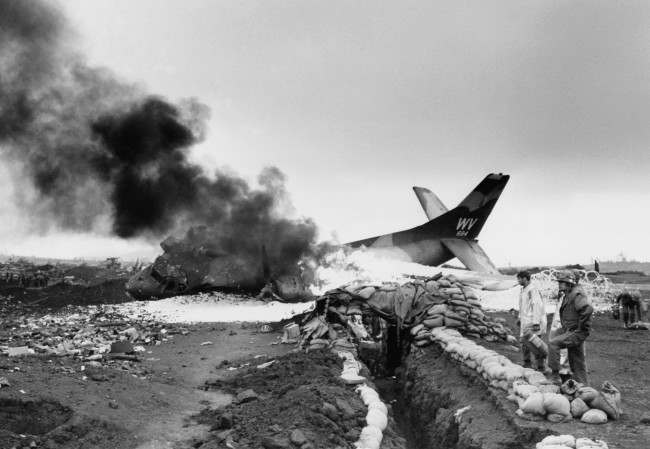
An American C-123 cargo plane burns after being hit by communist mortars while taxiing on marine post at Khe Sanh, South Vietnam on March 1, 1968.
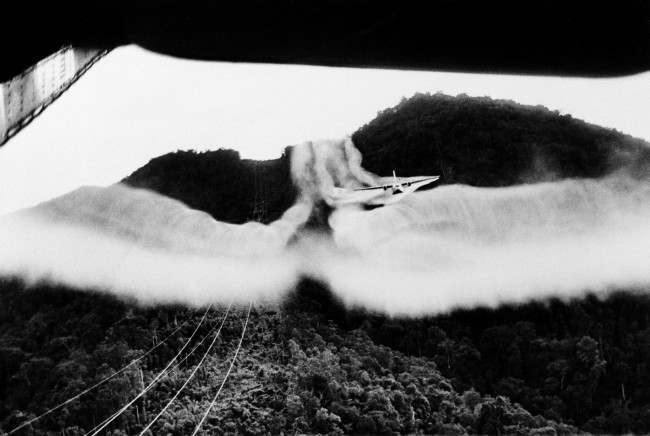
Flying at dawn, just over the jungle foliage, U.S. C-123 aircraft spray concentrated defoliant along power lines running between Saigon and Dalat in South Vietnam, early in August 1963. The planes were flying about 130 miles per hour over steep, hilly terrain, much of it believed infiltrated by the Viet Cong.
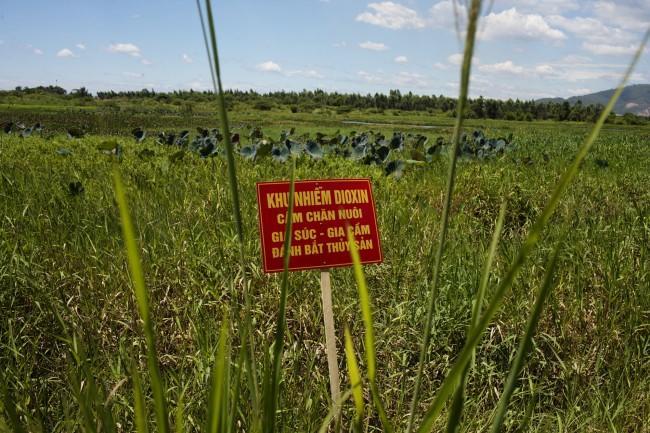
A warning sign stands in a field contaminated with dioxin near Danang airport, during a ceremony marking the start of a project to clean up dioxin left over from the Vietnam War, at a former U.S. military base in Danang, Vietnam Thursday Aug. 9, 2012. The sign reads; “Dioxin contamination zone – livestock, poultry and fishery operations not permitted”. The U.S. and Vietnam on Thursday launched a four-year joint effort to clean up dioxin leftover from Agent Orange that was mixed, stored and loaded onto planes at the former U.S. military base, which is now part of DanangÂs airport. Dioxin can linger in soils and at the bottom of lakes and rivers for generations, entering the food supply through the fat of fish and other animals.
Jim Stevenson talked with Peter Sills, author of Toxic War:
STEVENSON: How were American veterans at that time being exposed [to Agent Orange] in harmful ways?
SILLS: When you start spraying towns and villages, there are American soldiers there too. That is part of it. The food that people ate became poisoned, and the water that people drank. There is another surprising thing: herbicides came in 50-gallon barrels. When they were emptied, they were not really empty. There were two or three gallons of herbicide left in the barrels. Soldiers used them for showers, for bar-b-ques (grills for cooking). Vietnamese used them to hold gasoline and wound up spraying dioxin all over Vietnam. The cities became defoliated even though they were never sprayed (from U.S. planes). They were sprayed by Vietnamese automobiles and motorcycles. No one could figure it out for a while. So people were exposed in surprising and unexpected ways.STEVENSON: How many U.S. veterans are we talking about looking for some sort of compensation because of exposure to Agent Orange?
SILLS: Hundreds of thousands, possibly over a million. That is muddy unfortunately because there are so many people who are sick for reasons other than herbicide exposure. The symptoms of dioxin exposure, the poison in the herbicide, are not very different from what people get normally, heart attacks, diabetes, lung cancer, liver problems, neurological problems, things that people just get.
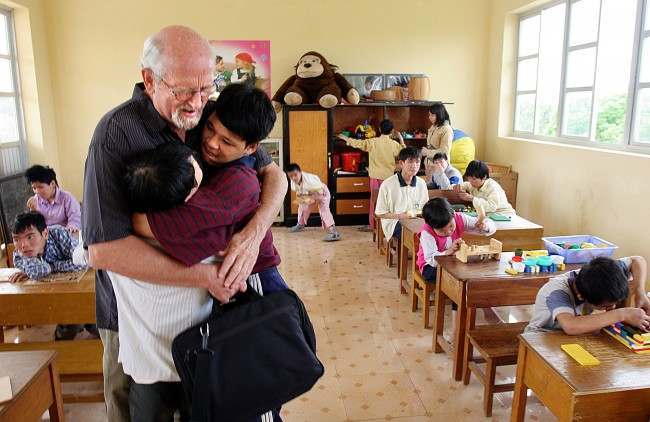
Peter Yarrow, right, songwriter, performer, and social activist, of the former folk group Peter, Paul and Mary sings an antiwar protest song to Vietnamese veterans at the Friendship Village for agent orange victims on the outskirts of Hanoi on Monday March 28, 2005. Yarrow is synonymous with the anti-war and peace movement in the United States in the 1960s and 70s and is on his first visit to Vietnam.
Would you like to support Flashbak?
Please consider making a donation to our site. We don't want to rely on ads to bring you the best of visual culture. You can also support us by signing up to our Mailing List. And you can also follow us on Facebook, Instagram and Twitter. For great art and culture delivered to your door, visit our shop.
